Disclosure: Meeple Mountain received a free copy of this product in exchange for an honest, unbiased review. This review is not intended to be an endorsement.
A year ago, our marketing contact at Italian publisher Horrible Guild showed off components from the prototype for Railroad Tiles, the newest iteration of the Railroad Ink series.
I was excited but a little nervous about what I saw that day. I thought, and still believe, that Railroad Ink was one of the five best fillers I have ever played and still have copies of both the Deep Blue Edition and successive expansions in my permanent collection. The roll-and-write nature of the puzzle system built into that game is fantastic, and Railroad Ink always lands well with both new and experienced gamers.
Railroad Ink always worked. Would this new tile-laying version of the original game still shine?
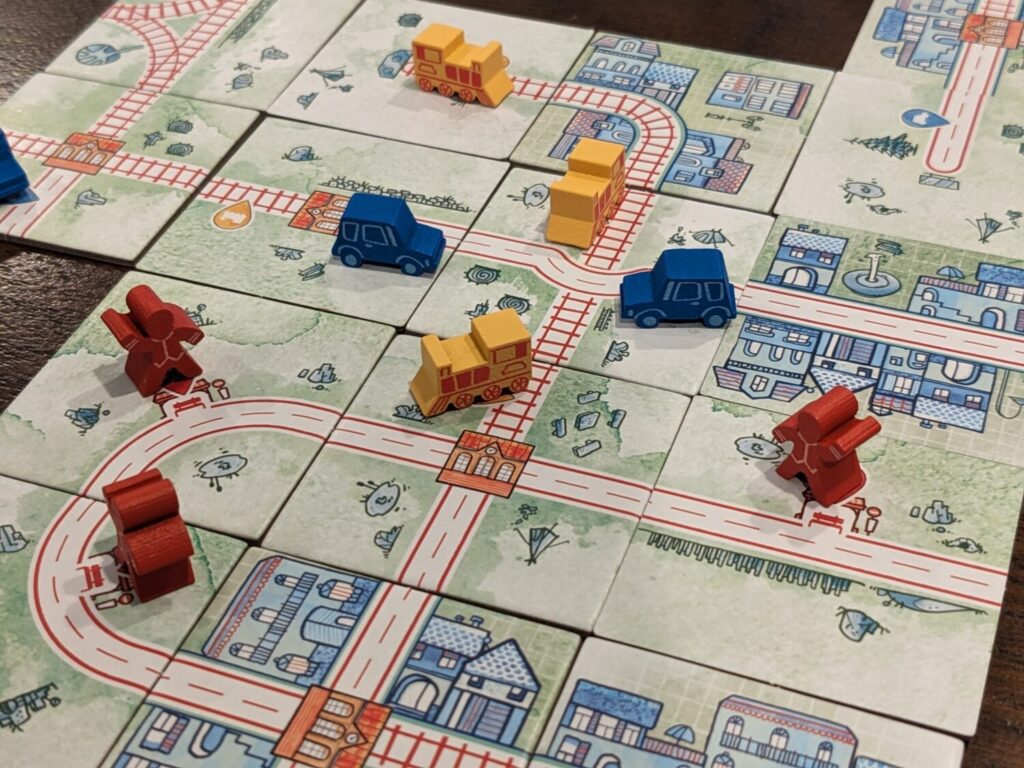
Hand Me the Draw Bag
Railroad Tiles, which recently began fulfillment for backers of the game’s 2024 crowdfunding campaign, is a route-building tile placement game for 1-4 players. Railroad Tiles is from the Railroad Ink universe, but Railroad Ink is not required to play Railroad Tiles.
In Railroad Tiles, players will draft randomly-drawn route tiles from a market to build a series of highway and railroad track connections, while also adding major objective tiles to their town to help spice up scoring. On a turn, players will use their marker to select a set of 2-4 tiles, then spend time fiddling around with each tile to build networks and later add wooden tokens (trains, cars, and “travelers”, the latter represented by red meeples who look like they are trying to hail a cab) to score points both during the game as well as set up end-game scoring conditions.
At the end of eight rounds, players will score additional points for their largest rectangle of placed tiles and city icons in groups within their finished play area. Negative points are subtracted for roads and track paths that go off into nowhere (similar to how this was scored in the Railroad Ink series, albeit a more forgiving structure here), then objectives are scored if players met each objective’s requirements. Across four plays, scores ended up in the high 20s to high 50s range, so it is relatively easy to track scores to spit out a winner.
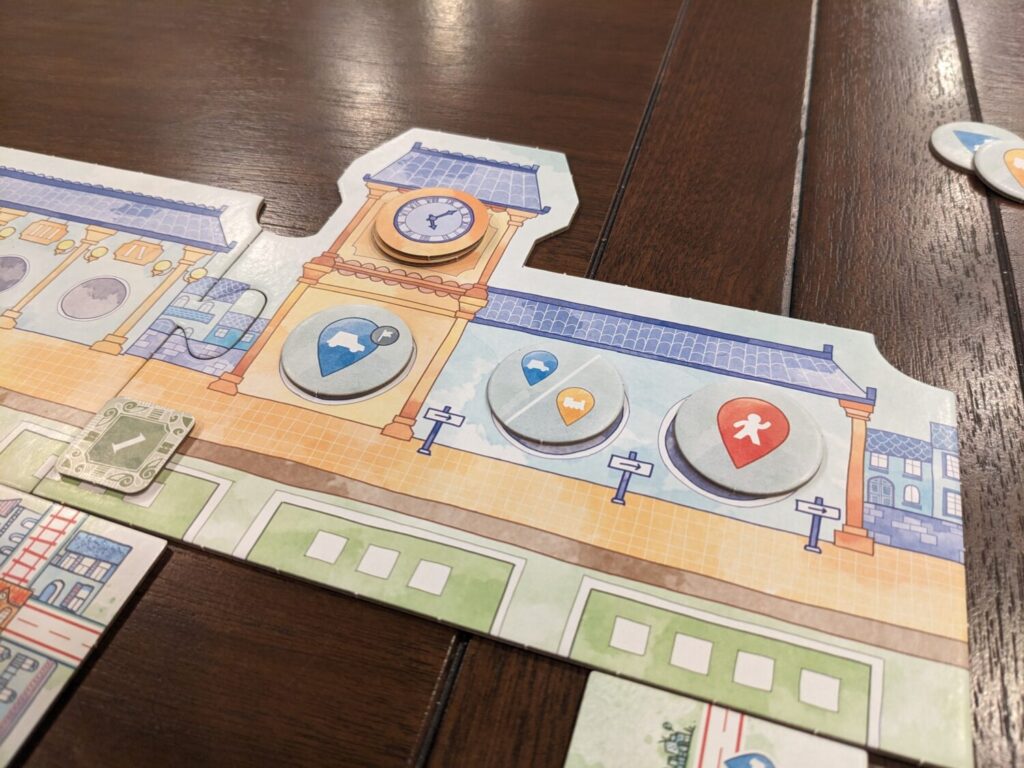
Lots to Track, Lots of Track to Love
The main change in Railroad Tiles, versus Railroad Ink, is the tile draft to determine how players will build out cities. In Railroad Ink, four dice were rolled and all players had to find ways to use the shared results. In some games of Railroad Ink, the finished network layout on a player’s board might look similar to an opponent’s, because savvy players were using the results in the same ways.
That’s not possible in Railroad Tiles, and I think that is the reason I will pull this version of the game out before the roll-and-write version, especially if I’m using the game as a long filler or as one of the night’s marquee games. Even four plays in, I have really loved watching players debate which set of tiles to draft on a turn. Some tiles will be absolutely worthless to a player, even though almost every tile can find a legal place in a person’s network. Often, players hunting for highways will get sniped by a neighbor, and in some cases, tiles that feature neither track nor highway will be useful simply for filling in space gaps in their burgeoning network.
There is real tension to the selection of tile columns…whoever takes the fewest tiles on a turn gets to go first in draft order for the following round. If I don’t love what I see across the entire draft board, I’ll just lay up and take the tiles in the first or second column, hoping for a better pull in the next round.
There are other considerations, starting with the objective tiles. For my first two plays, I took the advice in the rulebook (like Railroad Ink, Railroad Tiles is brought to you by Horrible Guild mainstays Hjalmar Hach and Lorenzo Silva) and skipped the use of the objective tiles. For my second set of two plays, I added objective tiles in…and now that I’ve used the objective tiles, I can’t remember why I took the advice of Hach and Silva to not use objectives in the first place! The objectives add a nice amount of that special something, because their rules are interesting and the objectives forced me into fun considerations.
Then there is the Pawn Placement phase of each round, which happens in rounds 2-8. Some of the tiles have “Pinpoints”, which look like small GPS symbols in one of three colors. Based on which Placement Tokens are active in a round, players get to add 1-2 matching pawns (those trains, cars and travelers mentioned earlier) to their existing network tiles. Those tokens are worth just a single point each on their own, but when connected via a player’s network to other tokens of a matching type, their values stack.
That means that finding ways to get long highway sections in one’s network can be really valuable, especially if some of those highways have blue car Pinpoints scattered throughout a section. This isn’t a requirement—there’s no negative effect for a player who decides to forego these scoring opportunities—but maximizing scoring opportunities has only been possible so far by doing a little bit of everything to score. Scoring 15-20 points during the game, then getting another 30+ points during end-game scoring, has been key.

Everything But the Girl
Here’s my only issue with the design for Railroad Tiles so far—it feels like it is easier to score travelers than the other two pawn types, because of the language in that rule.
When cars and trains are placed during the Pawn Placement phase, players score one point for the token placed in that round, plus one additional point (up to five in total) for each other car or train on the same network as that Pinpoint connected through the matching network type. So, placing a car on a highway’s blue car Pinpoint icon, in a network with one other car Pinpoint, will score two points: one for the current car, and one for the car that was placed on a previous turn.
However, if a station interrupts that network (like the Railroad Ink base game, where a black box on a die represented an exchange), that kills off the ability for other matching token types to score even if they could conceivably be reached if a person were to go by train to then transfer to a car to then later connect to another train.
Strangely, travelers don’t have this problem…so, as long as a network of roads and train tracks are connected, red traveler Pinpoints allow for a player to score travelers much more easily than scoring cars and trains.
My son used that to his advantage after seeing that travelers are strictly better, so he focused only on travelers for one of our plays. The game also provides a secondary out: star tokens, which can be collected during setup as well as from draft columns that were ignored in previous rounds, can be used to substitute scoring when a player doesn’t want to score the pawns that are active in a given round.
So, scoring for travelers feels a little unbalanced. It doesn’t break the game, but I am already aiming for traveler scoring Pinpoints over the other two pawn types.
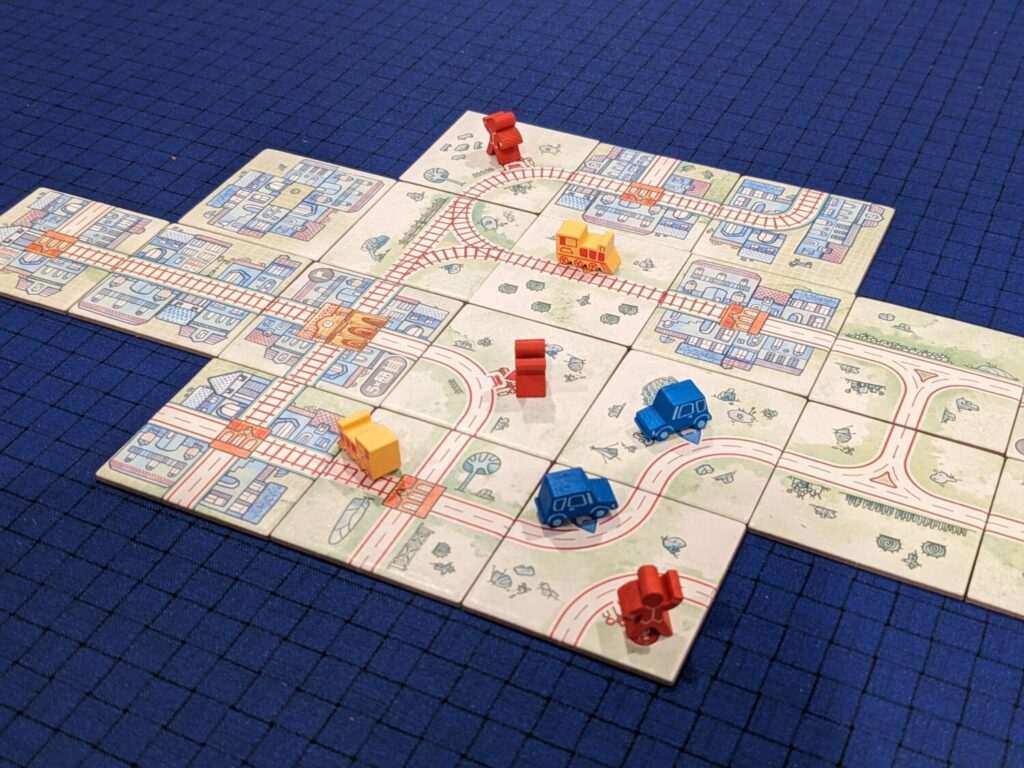
Otherwise, I have greatly enjoyed my experience with Railroad Tiles. It does many of the things I love about Railroad Ink, with a fresh coat of paint and an exciting way to build a route network with a good amount more interaction than Railroad Ink. It’s a beautiful-looking toy on the table, particularly by the end of each play, and the variability just in the base game is going to be enough for most people. (Horrible Guild sent not only two promo objective tiles, but also the World Expansion, which adds nearly 20 more ways to score tiles during the Pawn Placement phase. The World Expansion was also included for backers of the original crowdfunding campaign…and has a box that doesn’t fit cleanly in the base game box. Yes, I have already thrown the expansion box away!)
Railroad Tiles is a little longer than Railroad Ink—my four-player game of Railroad Tiles took about 45 minutes, whereas Railroad Ink always goes down in under 30 minutes—so the new iteration of the system rides the line between filler and main entree. With two players, Railroad Tiles is quite fast and plays in under a half-hour.
Railroad Tiles has an excellent solo system, with missions set up to attack the base game using 15 different challenges. My finding through just a couple of solo plays: the missions themselves are fairly straightforward, such as focusing on town tiles, Pinpoints in a certain color, or even creating four distinct batches of cities. But getting to 50 or 60 points during a game with each focus area has been the real challenge, and I’m enjoying how that has changed my approach from game to game.
I love train games, tile-laying games, city builders, and the Railroad Ink system, so it is not surprising that I have really enjoyed Railroad Tiles so far. The traveler scoring is a question mark, but that has been a minor blip. If you loved Railroad Ink and skipped the crowdfunding campaign, grab a copy of Railroad Tiles right now!


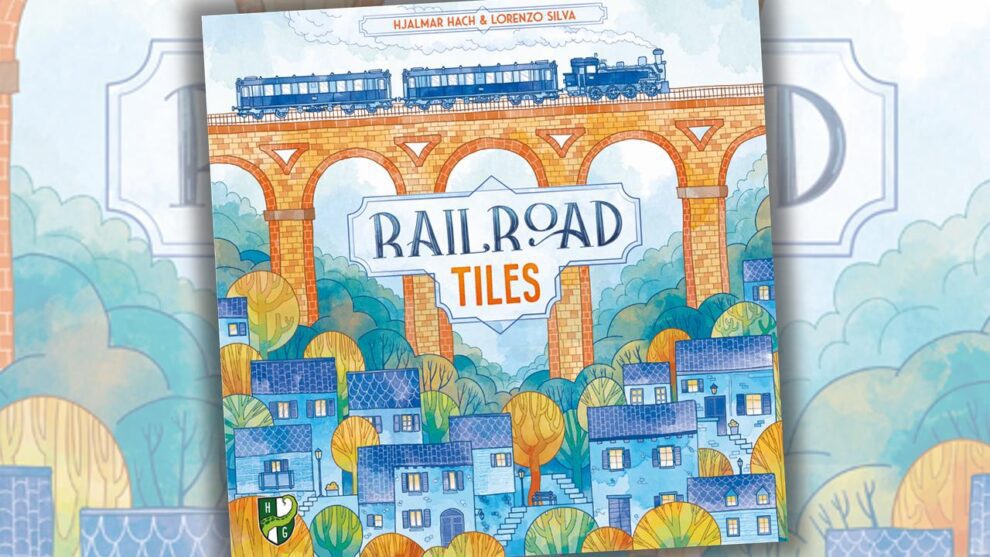



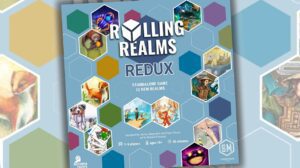


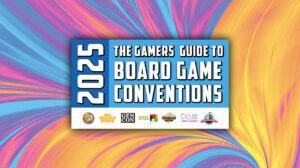

Add Comment